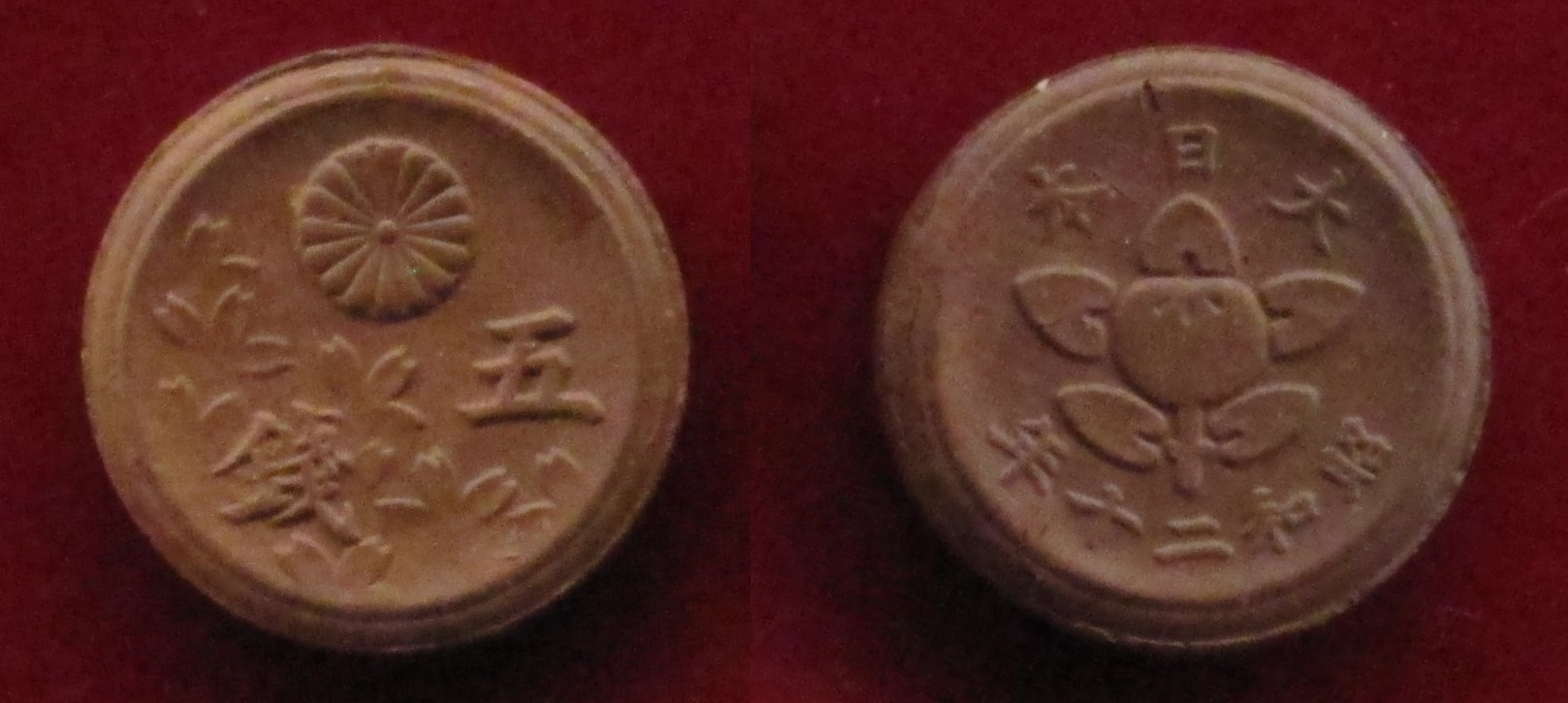List of Japanese coinage patterns on:
[Wikipedia]
[Google]
[Amazon]
 The following is a list of
The following is a list of

 The following is a list of
The following is a list of Japan
Japan is an island country in East Asia. Located in the Pacific Ocean off the northeast coast of the Asia, Asian mainland, it is bordered on the west by the Sea of Japan and extends from the Sea of Okhotsk in the north to the East China Sea ...
ese pattern coin
A pattern coin is a coin which has not been approved for release, but produced to evaluate a proposed coin design. They are often off-metal strike (using metals of lower value to test out the dies), to proof standard or piedforts. Many coin co ...
s from the yen based currency system started under the Meiji Restoration
The , referred to at the time as the , and also known as the Meiji Renovation, Revolution, Regeneration, Reform, or Renewal, was a political event that restored Imperial House of Japan, imperial rule to Japan in 1868 under Emperor Meiji. Althoug ...
.A. Piatt Andrew, ''Quarterly Journal of Economics'', "The End of the Mexican Dollar", 18:3:321–356, 1904, p. 345 The first patterns of the yen based system were made from 1869 to 1870 as presentation pieces to the Emperor. The new currency system was eventually adopted by the Meiji government in an Act signed on June 27, 1871. Pattern coins are almost never released into circulation as they are made for evaluation purposes only. Once a pattern is approved by government officials, it then goes to the minting process. Most of the patterns listed below are very rare, and sell for considerable amounts at auctions. The market value and rarity of any given coin is dependent on supply and demand.
Selected terminology
The following terms appear on the list below: Legend(s) – In numismatic terminology "legends" refer to inscriptions on any given coin. Common inscriptions for these coins include; , the reigning Emperor's name (ex: 明治 Meiji), the value of the coin, and the year of the Emperor's reign. Obverse/Reverse – These refer to the front (o) and back (r) side of a coin. Struck/Strike – This is part of the minting process. Variety – Coins struck with minor changes to their initial design are called "varieties".Meiji
*''Note: Early Japanese coins are read clockwise from right to left, while modern coins are read counterclockwise from right to left.''Early proposals
Rin
Sen
, - , 1 Sen , 2nd , 二 , 1869 , KM-Pn6 , The obverse is virtually identical to the 1st adopted design, but "1 SEN" is written in Kanji. The reverse features a sunburst design with the inscription written in Kanji. This coin is described as "very rare" byHeritage Auctions
Heritage Auctions is an American multi-national auction house based in Dallas, Texas. Founded in 1976, Heritage is an auctioneer of numismatic collections, comics, fine art, books, luxury accessories, real estate, and memorabilia from film, mus ...
.
, -
, 1 Sen
, 3rd
, 三
, 1870
, KM-Pn9
, The obverse of this pattern is the same as the preceding one, with a reverse similar to KM-Pn8. One of these coins sold for $15,600 (USD) at auction in March, 2019.
, -
, 1 Sen
, 10th
, 十
, 1877
, KM-PnA27
, Not much is known about this pattern other than a dragon design which is featured on the obverse. This particular coin was minted in silver, while all the other sen coins of the Meiji era were struck in copper.
, -
, 1 Sen
, 39th
, 九十三
, 1906
, Unlisted
, Virtually identical to the adopted second "1 sen" design, this "extremely rare" coin was struck in aluminum. No "1 sen" coins were struck for circulation during this year, only a few known copper issues were struck as Proof
Proof most often refers to:
* Proof (truth), argument or sufficient evidence for the truth of a proposition
* Alcohol proof, a measure of an alcoholic drink's strength
Proof may also refer to:
Mathematics and formal logic
* Formal proof, a co ...
s.
, -
, 1 Sen
, 41st
, 一十四
, 1908
, KM-Pn34
, This pattern is holed in the center, with the obverse featuring a wreath and "1 SEN" written in Kanji. The reverse has a sunburst which surrounds the central hole, legends and "1 SEN" are written in Arabic around the sunburst.
, -
, 1 Sen
, 44th
, 四十四
, 1911
, KM-Pn36
, The design for this copper coin is unknown.
, -
, 1 Sen
, 44th
, 四十四
, 1911
, KM-Pn37
, Obverse features a wreath with "1 SEN" written in Kanji, while the reverse features a large sunburst with legends surrounding it. "1 SEN" is written in Arabic at the bottom.
, -
, 5 Sen
, 21st
, 一十二
, 1888
, KM-Pn28
, Similar to the 4th adopted 5 sen design used in the following year (1889). This pattern is described as "extremely rare" by Heritage Auctions, and an example sold for $9,200 at auction in 2011.
, -
, 5 Sen
, 28th
, 八十二
, 1895
, KM-Pn29
, This copper nickel pattern has a sunburst in a circle surrounded by legends and "5 SEN" written both in Arabic and Kanji on the obverse. The reverse meanwhile features a symbol within a wreath. Both sides of the coin additionally feature a rope design near the border rim.
Yen
Trade dollars
Taishō
*''Note: Early Japanese coins are read clockwise from right to left, while modern coins are read counterclockwise from right to left.''Rin and Sen
Shōwa
*''Note: Early Japanese coins (until 1945–1946) are read clockwise from right to left, while modern coins are read counterclockwise from right to left.''Sen
Yen

Notes
References
{{Japanese currency and coinage (pre-yen) Coins of Japan Numismatics 1871 introductions Currencies of Japan Pattern coins